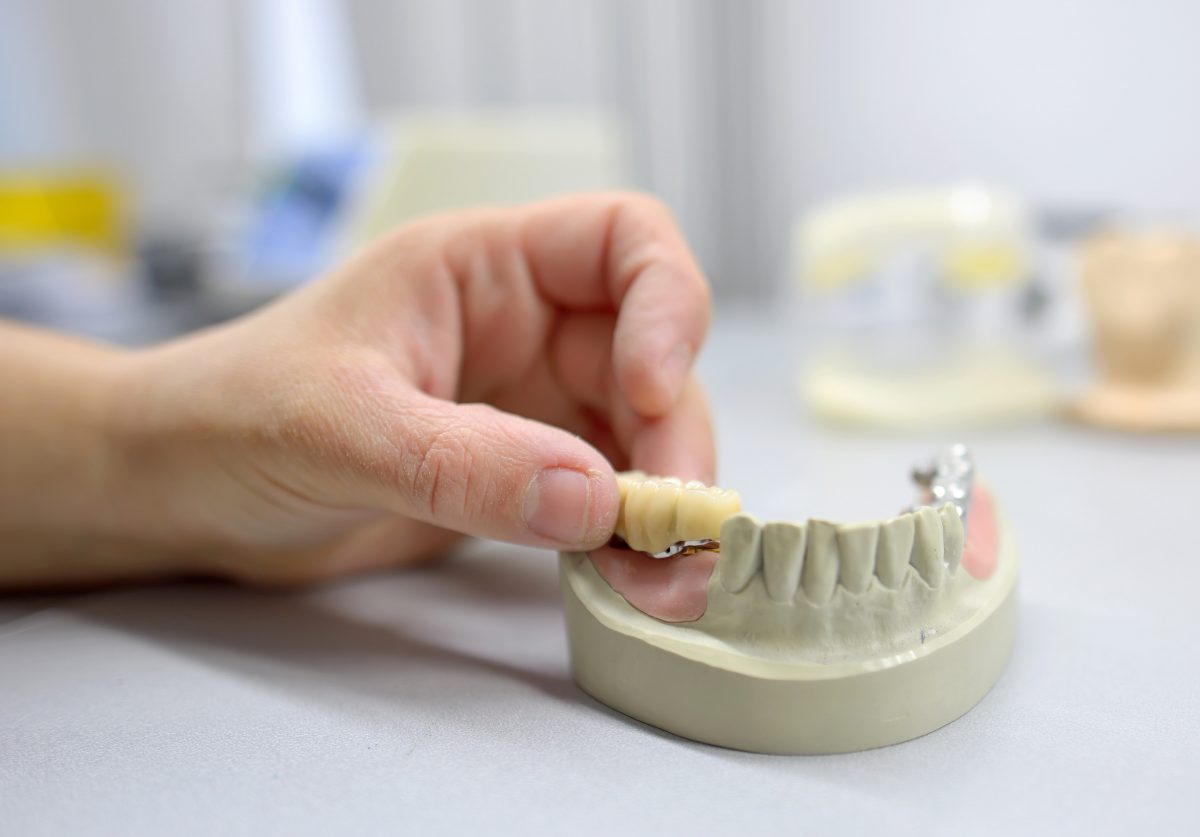Now that you’ve finally replaced your missing teeth with a dental bridge, the last thing you’ll want to do is replace it anytime soon. The staff at your dental clinic in Saskatoon probably told you that a dental bridge will typically last a decade. With careful care and attention to detail, you can extend the life of your bridge even beyond a decade and protect it from becoming prematurely damaged or decayed. Here’s how to protect the life and performance of your dental bridge.
Take care of your teeth
You’ve heard it over and over… to protect your teeth from tooth decay and cavities, brush and floss your teeth daily. That makes sense because your teeth are made up of living and organic tissues that are vulnerable to bacteria and infection, but why is oral hygiene important to protect a dental bridge? It’s true that the bridge and replacement teeth themselves won’t develop cavities, but here’s why oral hygiene is still essential.
Traditional dental bridges in Saskatoon are supported by natural teeth on either side of your missing teeth using dental crowns. Underneath those dental crowns are natural teeth that were modified by removing a small amount of enamel to make room for those crowns. Anything that undermines the health and structural integrity of those abutment teeth will threaten the strength and support on which your bridge relies. To protect your bridge, protect those abutment teeth from cavities by brushing and flossing daily.
What if you have an implant-supported bridge? Getting implant-supported bridges is your tooth-replacement option that provides the most stable and longest-lasting solution. Even they require you to take care of your mouth, though. Brushing, flossing and rinsing all the surfaces in your mouth with a fluoride mouthwash is no less important since bacteria allowed to accumulate around your gums can cause gingivitis, periodontitis and an infection called peri-implantitis that, if not eliminated, can destroy gum and even jaw tissue and threaten the integrity of your implant.
Avoid habits that may damage your bridge
Dental bridges obtained from a dental clinic in Saskatoon are typically made from sturdy and durable ceramic. Ceramic is, like enamel and other natural tooth material, a sturdy and durable material that can withstand the typical torques and biting forces of everyday eating, biting and chewing. Ceramic dental bridges are vulnerable to being damaged and broken by habits that expose them to exceptional biting force or pressure. Here are some common examples of bad habits that can damage your bridge and require that they be repaired or replaced no matter how young or old they are:
● If you have sleep bruxism, meaning you clench your jaw and grind your teeth as you sleep, but don’t wear a custom-fit night guard from a dental clinic.
● If you participate in sports with a risk of physical contact without wearing a mouth guard to protect yourself from oral injuries and damage to teeth. Oral injuries are the most common type of injury sustained in sports activities
● Biting and chewing on hard substances like hard candy, ice, fingernails and pencils
● Using your teeth as if they were pliers, wrenches, clamps, scissors or other tools, or holding hard objects between your teeth for prolonged periods. One of the best ways to protect the life of your bridge is as simple as this: When you need a tool for a particular job, use the right tool for that job. Not your teeth.
The last essential tip for preserving the life of your dental crowns is also our best tip for maintaining your health generally — in addition to everything mentioned above. Visit your dentist every six months for a regular checkup. Have your teeth cleaned annually by your dentist, and receive all recommended dental treatment. At those regular checkups, your dentist will examine the condition of all your dental work and recommend anything necessary to keep them functioning perfectly for as long as possible.

